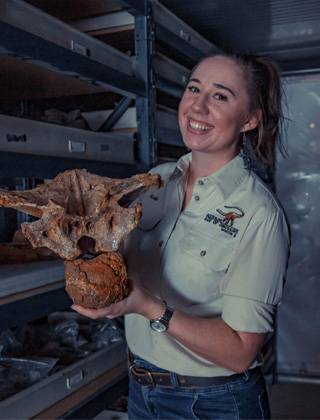To shed new light on the evolution of sauropods, the largest animals to ever walk on land and how they attained such unparalleled gigantism.
PhD project title:
The evolution and role of pneumaticity in the development of gigantism in sauropod dinosaurs.
 Project description:
Project description:

Sauropods were massive, quadrupedal, herbivorous dinosaurs with small heads, long necks, and long tails. Despite being the largest land animals to have ever existed, their skeletons are internally pneumatised, similar to those of living birds (and extinct theropod dinosaurs). The degree of pneumatisation in sauropod skeletons varies between species and across the skeleton: the vertebral column is typically heavily pneumatised, the limb bones are usually solid, and the shoulder and pelvis are more variable.
The distribution of pneumatisation across the evolutionary tree of sauropods, as well as changes in pneumatisation during growth across an individual’s lifespan, have not previously been quantified nor tested for correlation with the attainment of gigantism. Through a synthesis of the literature and novel CT scan data (which will provide insight into otherwise inaccessible information), this research will: (1) quantify the evolution of pneumatisation across sauropods by analysing convergence or divergence from their ancestors and close relatives; and (2) analyse the development of pneumatisation throughout the growth of sauropod species to compare against the growth seen in theropods (including birds).
This will shed new light on the evolution of the largest animals to ever walk on land, including how sauropods attained such unparalleled gigantism.
 Close
Close

